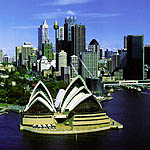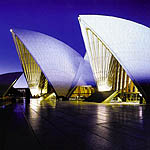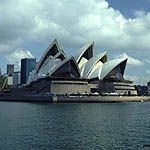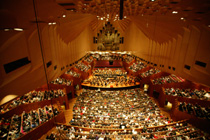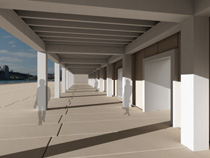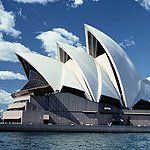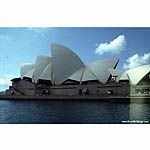Sydney Opera House, Australia 
The construction of the Sydney Opera House began in March, 1959 and was officially opened on the 20th of October, 1973.
In 1999, origial architect Jorn Utzon was re-engaged as Master Architect and Concept Designer who was in charge of the design and renovation of the Sydney Opera House building projects. This renovation process was carried out over 5 years.
|
- Architect: Jorn Utzon
- Acoustics: Nagata Acoustics
- Engineer: Ove Arup (Arup Acoustic & Structural Engineering)
- Construction Director: Peter Hall
- Construction System: tile-clad concrete and pre-cast concrete
- Context: urban waterfront
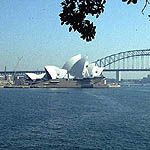
- Style: Expressionist Modern
The building Pojects:
- Utzon Room (Reception Hall)
- Western Loggia
- Opera Theatre
- Concert Hall
Like Jorn Utzon’s other works, the Sydney Opera House shows his sense of architecture as art, and natural instinct for organic structures related to site conditions. It is a beautiful freestanding, sculptural tripartite structure jutting out into Sydney Harbor and is overlooked by the Sydney Harbor Bridge.
The Sydney Opera House looks like white sailing boats or gigantic white sea shells floating on the blue Sydney Harbor; it also looks like white blooming flowers from some angles.
The famous opera house is actually a collection of performance spaces, under white-tiled, sail-shaped concrete shell vaults.
The Australian Ballet, Opera Australia, Sydney Symphony and the Australian Chamber Orchestra are the primary users of the Sydney Opera House.
The Western Loggia fulfils Jorn Utzon's vision for the harbour as a focal point for all Sydney Opera House's five venues. The Western Loggia is more than 45m in length and 5m wide with large windows and glass foyer façade, enlivening the Broadwalk so that visitors can experience more of the stunning harbour setting.
A gloriously colorful floor-to–ceiling woolen tapestry in the reception hall designed by Jorn Utzon acts as decorative art work as well as acoustic aid.
The tapestry displays stunning colors and visual rhythms. The gold color represents an explosion of violins, the black vertical shapes relate to the rhythm of the music, and the color patches indicate the individual instruments.

